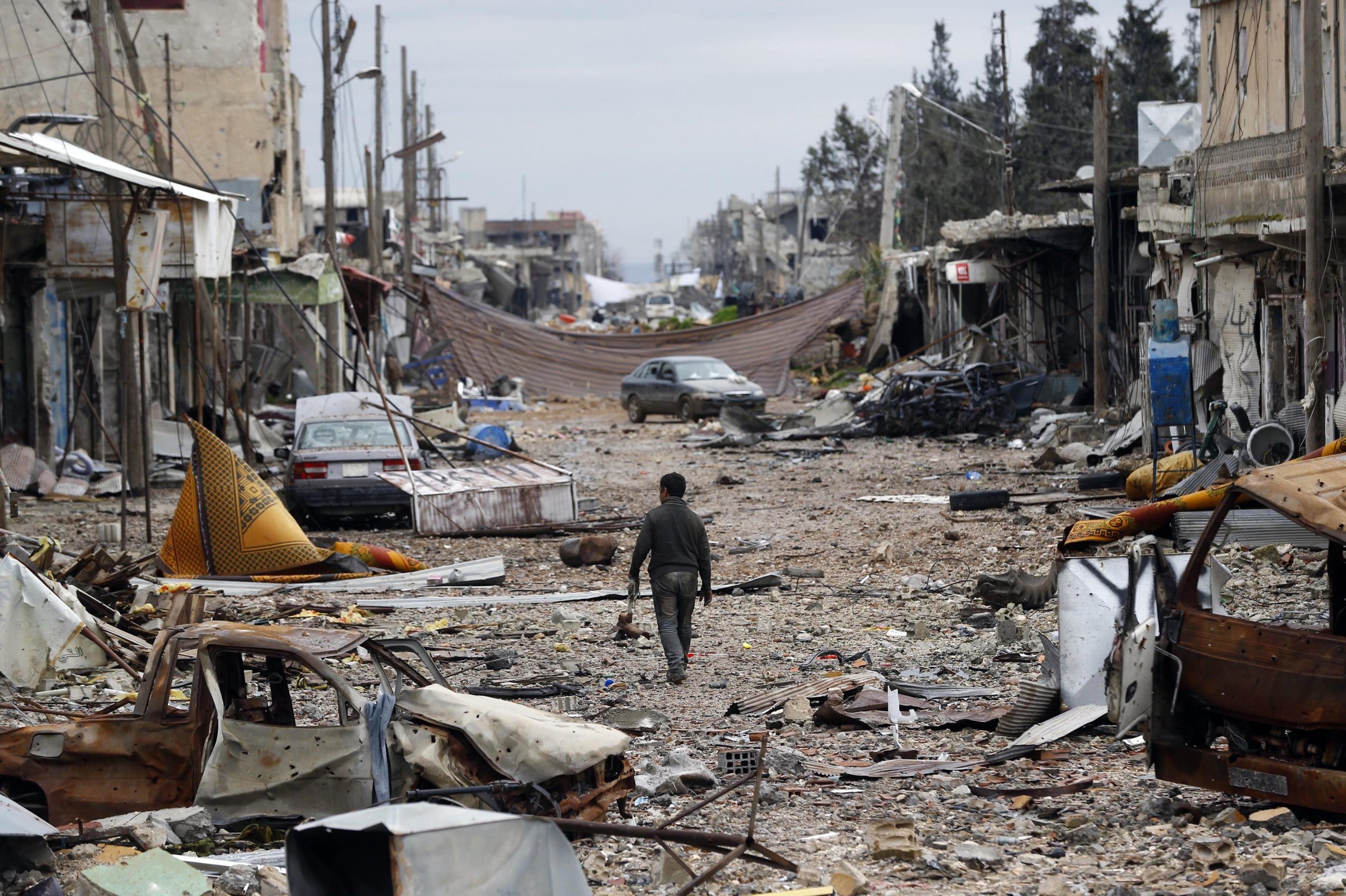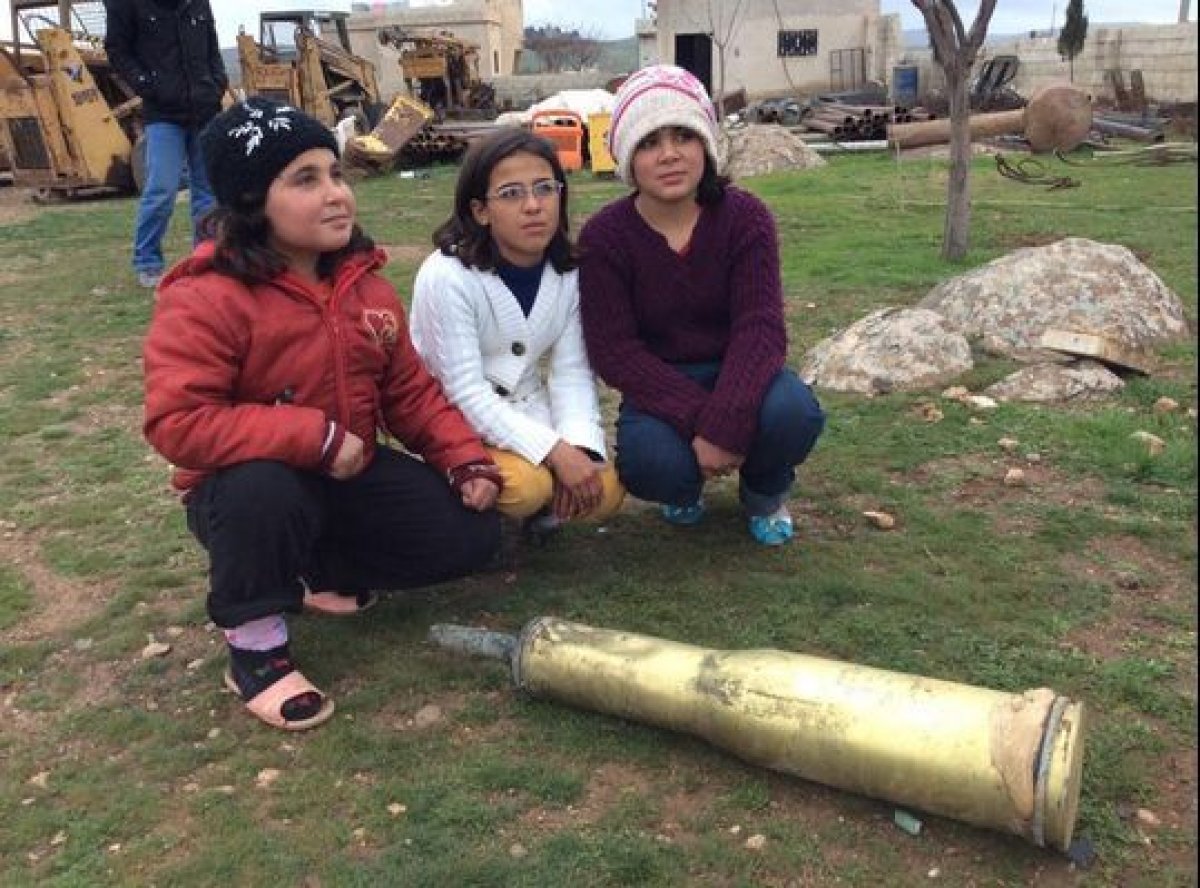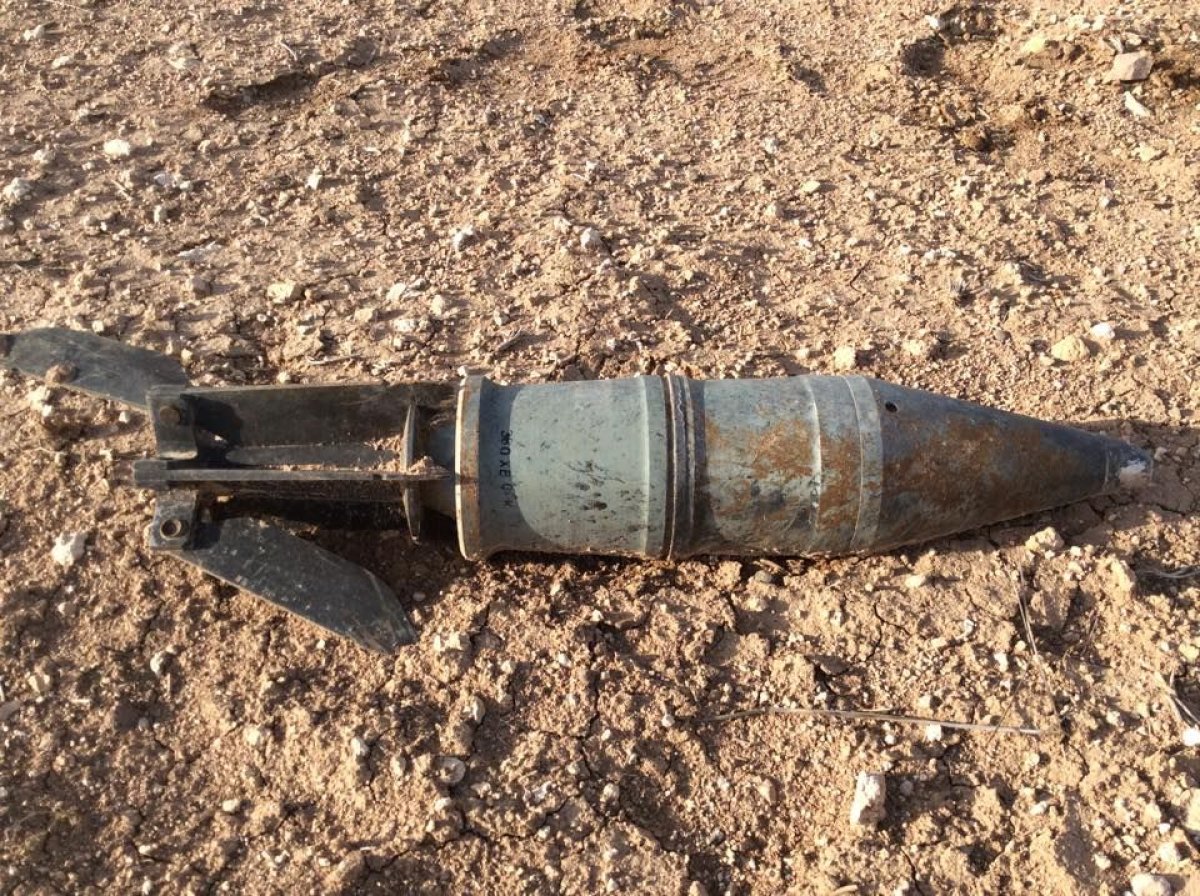
While Syrian-Kurdish People's Protection Units (YPG) fighters and Kurdish civilians celebrate the liberation of Kobane from ISIS after a four-month assault, many of the city's war-weary citizens are unable to return to their homes because of the vast amount of unexploded ordnance left in the conflict's aftermath, the city's president has told Newsweek.
Last month, the Syrian city was freed from the clutches of the radical Islamists with the help of approximately 700 US-led coalition airstrike. However, the conflict resulted in the deaths of over 1,800 people from both sides, according to the Syrian Observatory for Human Rights (SOHR), and 200,000 civilians were forced to flee across the border and into neighbouring Turkey. Photographs taken in the wake of the Kurdish victory showed entire buildings levelled and unexploded rockets perched on the side of the city's roads, demonstrating the new threat which returning civilians must now confront.
Anwar Muslim, the head of the Syrian-Kurdish canton who remained in Kobane throughout the conflict, warned that a dozen civilians have already died and tens have been seriously injured by explosive devices - such as bombs, mines and mortars - left over from the street-to-street fighting that defined the battle for the symbolic city.
"Until all bombs and booby traps are removed from Kobane, the city will not be safe," he says. "Therefore we are not allowing refugees living in camps in Turkey to return to their homes." He adds that a number of the casualties have been caused by Kobane residents secretly re-entering the city in the hope of returning to their homes.
The devices not only threaten residents at the heart of Kobane, but also the villagers in the countryside surrounding the city. Shahin Ahmed, a 65-year-old from the village of Sheran - seven kilometers east of the liberated city - says he returned to his village as he did not wish to stay in a camp. Thousands of Kobane citizens remain in camps, such as the one in the Turkish border town of Suruc, the country's largest refugee camp which houses 4,500 people.

Despite making the return to his village, where Ahmed says ISIS had looted "everything we owned", he speaks of the villagers' fear of being killed by an unexploded mine or an ISIS boobytrap, Recently, a car drove into a mine in the village, killing two people on the scene and hospitalising two others.
"ISIS thugs have planted landmines all over the village. Wherever we touch, it is full of these mines," says Ahmed. "As if all the destruction ISIS has caused was not enough, they [the villagers] are afraid to enter their own homes now because of the mines and booby-traps that are found everywhere."
"That there might be unexploded ordnance is unsurprising and it most likely derives from a familiar ISIS strategy of booby trapping buildings and roads in the face of a retreat," says Middle East Forum researcher Aymenn Jawad al-Tamimi.
An additional worry in Kobane is that the health services have been completely dismantled because of the conflict, hampering the authorities' ability to tackle the wealth of psychological and health care problems caused by the conflict, according to Dr Nahsan Ahmed, head of health affairs in the Kobane canton. who also speaks of the threat from unexploded mortars.
"We need operation materials and oxygen tanks. Children have been seriously affected by the war; to deal with the psychological state of the children we need psychologists," says Ahmed. "There are still many ISIS corpses around the city in the debris, in the coming days this will cause health problems."

In light of the menace posed by unexploded devices to returning civilians, Kobane's top official, Muslim, made an urgent appeal to the international community for assistance in the perilous task of removing any residual ordnance.
"We are calling on the UN, the EU and all aid and humanitarian organisations to provide the necessary expertise to remove such dangers immediately," he added.
However, Henri Barkey, former member of the U.S. State Department Policy Planning Staff and professor of International Relations at Lehigh University, argues that the only people who can help the Kurds of Kobane clean the unexploded ordnance are the Iraqi-Kurds - as long as Ankara grants them permission to cross into Turkish territory - because they "have the experience and depth" to assist in this field.
During ISIS's assault on the Kobane, 70% of the entire city was destroyed, estimated Rami Abdurrahman, director of SOHR. The UK-based monitoring group documented the deaths of 39 Kurdish civilians - four of whom were beheaded - 502 YPG fighters and 1,271 ISIS militants. The figures did not include deaths resulting from US-led coalition airstrikes.
Uncommon Knowledge
Newsweek is committed to challenging conventional wisdom and finding connections in the search for common ground.
Newsweek is committed to challenging conventional wisdom and finding connections in the search for common ground.
About the writer
Jack is International Security and Terrorism Correspondent for Newsweek.
Email: j.moore@newsweek.com
Encrypted email: jfxm@protonmail.com
Available on Whatsapp, Signal, Wickr, Telegram, Viber.
Twitter: @JFXM
Instagram: Read more
To read how Newsweek uses AI as a newsroom tool, Click here.








